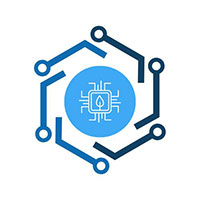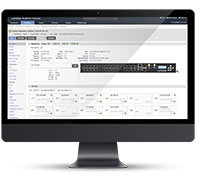
When DNS Fails: How Out-of-Band Management Keeps Enterprise Networks Resilient
When AWS experienced a DNS-related outage today, impacting major platforms like Lyft, Zoom, Canva, and Coinbase, IT leaders around the world were reminded that even the most sophisticated cloud environments can still suffer from single points of failure that can cascade and rapidly bringing business to a halt.
For enterprise network administrators, this incident highlights a common and often underestimated risk. When the Domain Name System (DNS)—the internet’s “address book”—goes down, entire operations can become unreachable. Even worse, your normal in-band management tools, such as SSH or RDP over the production network, typically go down too.
When that happens, your team loses not just connectivity, but control.
The Hidden Vulnerability in Modern Networks
In today’s connected enterprise, nearly every management process relies on DNS. Authentication, monitoring, and automation platforms all depend on name resolution to communicate. When DNS fails, network visibility collapses, and troubleshooting becomes exponentially harder.
That’s why true network resilience isn’t just about redundancy or failover. It’s about maintaining independent access to critical infrastructure even when the primary network is compromised.
How Lantronix Out-of-Band Management Protects You During a DNS Outage
Lantronix Out-of-Band (OOB) Management provides that critical layer of independence. By establishing a separate, always-available management plane often through a secure cellular or alternate link—Lantronix OOB keeps you connected to your network devices when everything else fails.
Here’s how it works in a DNS outage scenario:
- Independent Access | OOB uses a secondary connection, separate from your production network (cellular, POTS line, secondary fiber, … even a satellite link), to ensure reachability during DNS or routing failures. Even when name resolution or internal routes are down, your management path stays online.
- Console-Level Troubleshooting | If DNS issues prevent access over in-band tools like SSH or RDP, Lantronix OOB enables direct serial console access. Admins can log in, run diagnostics, and recover devices without relying on the production network.
- Investigate On-Instance Configurations | Through OOB, you can inspect and correct local configuration files such as /etc/resolv.conf and test DNS functionality with tools like dig or nslookup—helping you determine whether the problem lies within your environment or with external services.
- Verify External Connectivity | Using the OOB connection, you can confirm whether affected devices can still reach internal or public DNS servers. This helps isolate whether the root cause is internal misconfiguration or an upstream provider issue.
Beyond Outages: Automating Network Resilience
Lantronix OOB solutions like the LM-Series take resilience further with AI-driven automation and policy-based recovery. These systems can detect and remediate issues automatically, serving as an expert system to execute run book-based remediations that restore service faster than manual intervention.
This not only shortens recovery times but also supports compliance with best practices recommended by the Cybersecurity and Infrastructure Security Agency (CISA) and the National Security Agency (NSA) for separating management traffic from production networks.
By decoupling control from your operational traffic, you enhance both security posture and operational continuity.
Key Takeaway for Enterprise IT Teams
DNS failures—and other core service disruptions—are inevitable. What matters is whether your team can maintain visibility, access, and control when the network goes down. Lantronix Out-of-Band Management gives you that lifeline. It’s not just a backup, it’s a strategic enabler of uptime, security, and confidence in complex enterprise environments.
Outages will happen. With Lantronix, you stay in control. We’d love to show you how. Sign up for an online demo today!








